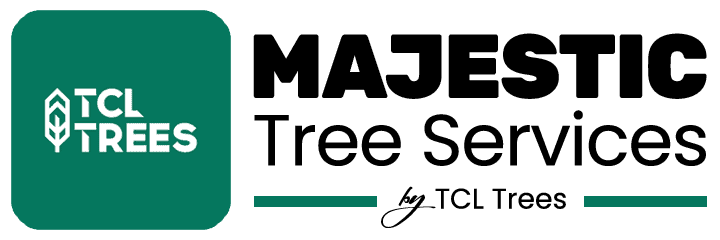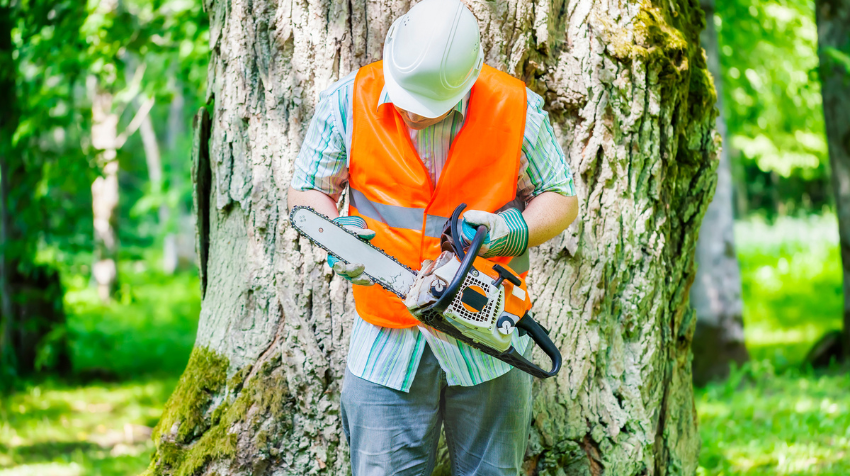The Importance of Tree Inspections: Revealing Hidden Dangers for a Safer Environment
Are you aware of the potential hazards posed by trees on your property? While they may seem like harmless additions to your landscape, they can actually pose a significant risk to both people and property if not properly maintained.
That’s why tree inspections are essential for creating a safe environment. By identifying signs of damage or disease before they become major issues, you can take proactive steps to ensure the safety of everyone in your area. Whether it’s a branch that could fall at any moment or an entire tree that could topple over, these hidden dangers must be addressed promptly and expertly.
In this article, we’ll explore the importance of tree inspections and offer tips for hiring a professional arborist who can help keep you and your community safe.
Key Takeaways
- Trees can pose a significant risk to people and property if not properly maintained.
- Regular tree inspections and maintenance programs are essential for reducing the risks associated with tree hazards.
- A qualified arborist can identify potential problems before they become major safety issues by assessing the overall health of the tree, checking for signs of decay or damage, and evaluating its structural integrity.
- Preventive measures such as pruning or cabling can mitigate the risk of branch failure or uprooting.
Understanding the Importance of Tree Inspections
Without regular tree inspections, hidden dangers could be lurking above us, waiting to strike like a ticking time bomb. Tree hazards can pose a serious threat to human safety and property, especially during severe weather conditions.
Branches weakened by disease or insects, root damage caused by construction or soil erosion, and improper pruning techniques are just some of the factors that contribute to tree failures. The consequences of falling trees can range from minor damage to devastating injuries or even fatalities.
Preventive measures, such as regular tree inspections and maintenance programs, are essential for reducing the risks associated with tree hazards. A qualified arborist can identify potential problems before they become major safety issues by assessing the overall health of the tree, checking for signs of decay or damage, and evaluating its structural integrity.
Early detection allows for timely interventions such as pruning or cabling, which can mitigate the risk of branch failure or uprooting. Taking proactive steps towards tree care not only ensures a safer environment but also helps prolong the life of our valuable natural resources.
Identifying Signs of Damage or Disease
By spotting signs of damage or disease, you can ensure the well-being and longevity of your trees. Here are three common tree diseases to look out for:
-
Dutch Elm Disease – This fungal disease is spread by bark beetles and causes wilted leaves, yellowing foliage, and eventual death of the tree. Prevention measures include pruning infected branches and avoiding storing firewood from infected trees.
-
Oak Wilt – Another fungal disease that affects oak trees, causing wilting leaves and discoloration. Prevention measures include avoiding wounding the tree during pruning or construction projects and using fungicide treatments.
- Pine Wilt – This bacterial disease affects pine trees, causing wilting needles and eventually killing off the entire tree. Prevention measures include removing infected trees promptly and avoiding planting pines in areas with sandy soil.
It’s also important to consider the impact of weather on tree health. Drought conditions can weaken a tree’s immune system, making it more susceptible to diseases and insect infestations. Proper watering techniques can help prevent this issue.
Additionally, extreme weather events such as strong winds or heavy snowfall can cause physical damage to a tree that may lead to further issues down the line if not addressed promptly through proper maintenance practices like pruning or cabling support systems.
By staying vigilant about potential damage or disease symptoms in your trees, you can take preventative action before it’s too late and ensure their continued health for years to come.

Hiring a Professional Arborist
When you want to ensure the health and longevity of your trees, it’s time to consider hiring a professional arborist who can provide expert care and maintenance.
An arborist is a trained professional who specializes in the care of individual trees. They are equipped with the knowledge and skills needed to identify any potential problems that your tree may be facing, such as disease or damage caused by pests or environmental factors.
One benefit of hiring a certified arborist is that they’ve undergone extensive training and certification processes to become experts in their field. This means that they possess the knowledge required to properly diagnose any issues your tree may be experiencing and recommend appropriate solutions.
However, it’s important to consider the cost when hiring an arborist as their services can vary widely depending on location, experience, and level of expertise. Despite this, investing in proper tree care now could save you from costly damages or removals down the line.
Taking Steps to Ensure Tree Safety
To ensure the safety of your property and loved ones, it’s important that you take proactive steps towards maintaining the health and stability of your trees. Regular tree maintenance is essential in preventing potential hazards such as falling limbs or uprooting. It also helps to enhance the beauty and value of your landscape.
Here are three key steps you can take to promote tree safety:
-
Schedule regular inspections with a professional arborist who will conduct a risk assessment on your trees.
-
Prune or remove any dead, diseased, or damaged branches that pose a risk to people or property.
- Install support systems such as cables and braces on weak branches or trunks to prevent them from breaking under pressure.
By following these steps, you can help ensure that your trees are healthy, stable, and safe for everyone to enjoy. Remember that prevention’s always better than cure when it comes to tree care!

Frequently Asked Questions
What are the common types of trees that are prone to damage or disease?
To identify dangerous trees, look for signs of decay or damage in common types like pine, oak, and maple. Prevention tips include regular inspections and pruning. Identifying tree diseases can also prevent potential hazards.
How often should tree inspections be conducted to ensure safety?
To ensure safety, tree inspections should be done every 1-3 years. Frequency recommendations can vary based on factors like tree species and location. It’s important to seek expert opinion for a thorough assessment of potential risks.
Can homeowners perform tree inspections themselves or should they always hire a professional arborist?
While DIY inspections can be done, it’s recommended to hire a professional arborist due to their expertise in identifying hidden dangers. Their experience allows for a more thorough inspection and ensures the safety of your property.
What are the potential consequences of neglecting tree inspections and maintenance?
Neglecting tree inspections and maintenance can lead to falling branches, property damage, injury or death. Tree inspection benefits include identifying potential hazards and mitigating risks. Professional arborists have the expertise to ensure a safe environment.
Are there any legal regulations or requirements for tree inspections on private property?
You may face legal implications and limited insurance coverage if you neglect tree inspections on your private property. It’s crucial to prioritize regular checks to ensure the safety of yourself, others, and your assets.
Related Source

